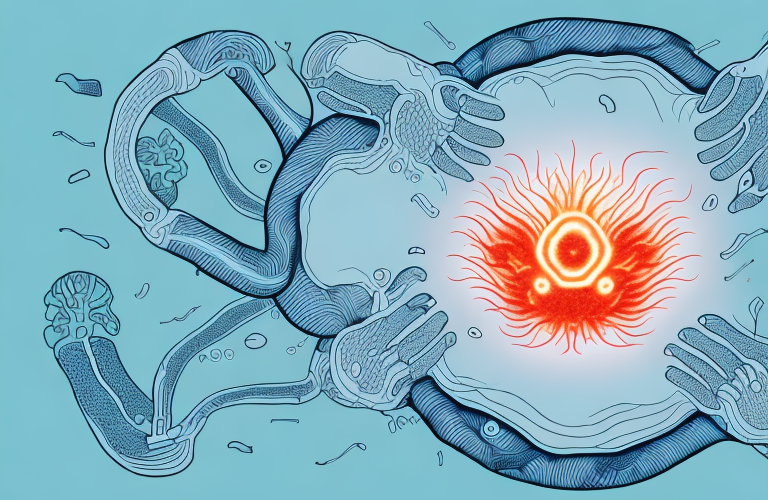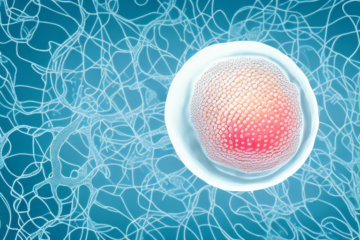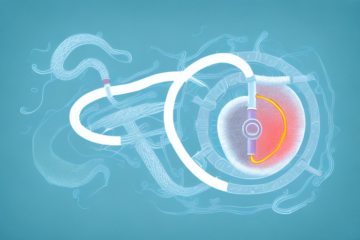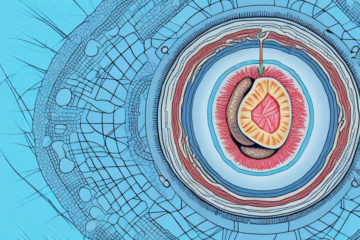Appendicitis is a common medical condition that affects millions of people across the world. In this article, we will provide you with an in-depth understanding of this condition, including its causes, symptoms, diagnosis, treatment options, and more. So, let’s dive in and explore everything you need to know about appendicitis.
What is Appendicitis?
Appendicitis is a medical condition that occurs when the appendix becomes inflamed and swollen. The appendix is a small, finger-shaped pouch attached to the large intestine. Its function is not entirely clear, but it is believed to be an important part of the immune system.
The symptoms of appendicitis include abdominal pain, nausea, vomiting, and fever. The pain usually starts around the belly button and then moves to the lower right side of the abdomen. If left untreated, the appendix can burst, causing a serious infection in the abdomen.
The treatment for appendicitis is usually surgery to remove the appendix. This is called an appendectomy and is a common procedure. In some cases, antibiotics may be given to treat the infection before surgery is performed. It is important to seek medical attention if you suspect you have appendicitis, as prompt treatment can prevent complications.
Causes of Appendicitis
Appendicitis can be caused by various factors. One of the most common causes is the blockage of the opening of the appendix, leading to a buildup of mucus, bacteria, and other infectious agents inside the appendix. This blockage can be caused by fecal matter, swollen lymph nodes, or even tumors.
Other contributing factors to appendicitis include viral infections, bacterial infections, and parasites. In some rare cases, trauma or injury to the abdomen can also lead to appendicitis.
Recent studies have also suggested that genetics may play a role in the development of appendicitis. Individuals with a family history of appendicitis may be at a higher risk of developing the condition themselves.
In addition, certain dietary habits may increase the likelihood of developing appendicitis. A diet high in processed foods and low in fiber can lead to constipation, which in turn can increase the risk of blockages in the appendix.
Symptoms of Appendicitis
The symptoms of appendicitis can vary from person to person, but the most common signs include:
- Abdominal pain that starts near the navel and moves to the lower right-hand side of the abdomen.
- Nausea and vomiting.
- Loss of appetite.
- Fever and chills.
- Bloating and constipation or diarrhea.
It is essential to seek medical attention as soon as you experience these symptoms to prevent complications, including ruptured appendix and peritonitis.
In addition to the common symptoms, some people may experience atypical symptoms of appendicitis, such as pain in the back or rectum, painful urination, or difficulty passing gas. These symptoms can make it challenging to diagnose appendicitis, so it is crucial to inform your doctor of any unusual symptoms you may be experiencing.
Diagnosis of Appendicitis
If you suspect that you have appendicitis, your doctor will conduct a physical exam to check for tenderness, swelling, and pain in your abdomen. Additionally, they may also recommend imaging tests such as an ultrasound or CT scan, blood tests, and a urine test to rule out other conditions that have similar symptoms to appendicitis.
It is important to seek medical attention immediately if you experience symptoms of appendicitis, such as sudden pain in the lower right side of your abdomen, nausea, vomiting, and loss of appetite. Delaying treatment can lead to a ruptured appendix, which can cause serious complications and require emergency surgery.
Treatment Options for Appendicitis
The most common treatment for appendicitis is the removal of the appendix through surgery, known as appendectomy. This surgery is considered safe and effective and is performed under general anesthesia. In some cases, antibiotics may be used before surgery to reduce inflammation and prevent infection. However, antibiotics alone are not enough to treat appendicitis.
In addition to surgery and antibiotics, there are other treatment options for appendicitis that may be considered depending on the severity of the condition. For mild cases, rest and a liquid diet may be recommended to allow the inflammation to subside. Pain medication may also be prescribed to manage discomfort. In more severe cases, hospitalization may be necessary to monitor the condition and provide intravenous antibiotics and fluids. It is important to seek medical attention promptly if you suspect you may have appendicitis, as untreated appendicitis can lead to serious complications.
Surgical Procedures for Appendicitis
There are different surgical procedures for appendectomy. The most common method is laparoscopic surgery, in which small incisions are made in the abdomen to remove the appendix with the help of a camera and specialized instruments. The other method is open surgery, in which a larger incision is made in the abdomen to remove the appendix. Your doctor will determine which method is best for you depending on your condition and overall health.
In some cases, antibiotics may be used to treat appendicitis instead of surgery. This is typically only recommended for patients with a mild case of appendicitis and who are not at high risk for complications. However, it is important to note that antibiotics alone may not fully treat the condition and surgery may still be necessary in the future.
Post-Operative Care for Appendectomy Patients
After the surgery, you will need to rest and recover in the hospital for a few days. Your doctor will prescribe pain medication to manage any discomfort and possibly antibiotics to prevent infection. You will need to avoid heavy lifting and strenuous activities for several weeks after surgery to allow your body to heal properly.
In addition to pain medication and antibiotics, your doctor may also recommend a special diet to follow during your recovery period. This may include foods that are easy to digest and high in fiber to prevent constipation, which can be a common side effect of surgery.
It is important to follow all post-operative instructions provided by your doctor to ensure a smooth and successful recovery. This may include attending follow-up appointments, monitoring your incision site for signs of infection, and gradually increasing your activity level as advised by your doctor.
Complications of Appendicitis Surgery
While appendectomy is considered a safe and straightforward surgery, there are still risks and potential complications, such as bleeding, infection, and injury to surrounding organs. Additionally, in some rare cases, the appendix may rupture before or during surgery, leading to peritonitis. Peritonitis is a severe condition that requires immediate medical attention and may lead to life-threatening complications if left untreated.
It is important to note that some patients may experience postoperative complications, such as nausea, vomiting, and constipation. These symptoms are usually temporary and can be managed with medication and proper care. However, if these symptoms persist or worsen, it is important to contact your healthcare provider immediately.
Recurrence and Prevention of Appendicitis
Once the appendix is removed, it will not grow back, and therefore, you cannot get appendicitis again. However, in rare cases, a stump of tissue or a piece of the appendix may be left behind during surgery, which can cause recurrent appendicitis. To prevent the recurrence of appendicitis, it is crucial to maintain good bowel habits, stay hydrated, and consume a balanced diet that is high in fiber.
It is important to note that not all cases of appendicitis require surgery. In some cases, antibiotics may be prescribed to treat the infection and inflammation of the appendix. However, if the appendicitis is severe or if there is a risk of rupture, surgery is usually necessary.
In addition to maintaining good bowel habits and a healthy diet, it is also important to seek medical attention if you experience any symptoms of appendicitis, such as abdominal pain, nausea, vomiting, or fever. Early diagnosis and treatment can help prevent complications and ensure a faster recovery.
Differences Between Acute and Chronic Appendicitis
Acute appendicitis refers to the sudden onset of symptoms, while chronic appendicitis is a long-term condition characterized by mild, recurrent abdominal pain. Chronic appendicitis is more challenging to diagnose than acute appendicitis, and sometimes surgery is the only way to determine if the appendix is inflamed.
One of the key differences between acute and chronic appendicitis is the severity of symptoms. Acute appendicitis typically causes severe pain in the lower right abdomen, nausea, vomiting, and fever. In contrast, chronic appendicitis may cause mild, intermittent pain that comes and goes over a period of weeks or months. Patients with chronic appendicitis may also experience other symptoms such as bloating, constipation, or diarrhea.
Another difference between acute and chronic appendicitis is the risk of complications. Acute appendicitis can lead to serious complications such as a ruptured appendix, which can cause infection and inflammation throughout the abdomen. Chronic appendicitis, on the other hand, is less likely to cause complications, but it can still lead to discomfort and reduced quality of life for patients.
Misdiagnosis and Delayed Diagnosis of Appendicitis
Appendicitis can sometimes be misdiagnosed, leading to delayed treatment and possible complications. This delay can occur due to various reasons, such as similar symptoms with other conditions or atypical presentations. Therefore, it is essential to communicate clearly with your doctor and seek a second opinion if needed to ensure a proper diagnosis and treatment plan.
It is also important to note that certain populations may be at a higher risk for misdiagnosis or delayed diagnosis of appendicitis. For example, women of reproductive age may experience symptoms that are similar to gynecological issues, leading to a misdiagnosis. Additionally, elderly patients may present with atypical symptoms, such as confusion or a lack of appetite, which can delay a proper diagnosis. It is crucial for healthcare providers to consider these factors and conduct a thorough evaluation to avoid misdiagnosis or delayed treatment.
Preparing for an Appendectomy: What to Expect Before, During, and After Surgery
If you are scheduled to undergo an appendectomy, your doctor will provide you with detailed instructions on how to prepare for the surgery. This may include fasting for several hours before the surgery, stopping certain medications, and avoiding certain activities. During the surgery, you will be under general anesthesia, and your surgeon will remove the appendix. Afterward, you will need to follow post-operative care instructions to ensure proper healing and avoid any complications.
It is important to note that while an appendectomy is a common and relatively safe procedure, there are still risks involved. These risks may include bleeding, infection, and damage to surrounding organs. Your surgeon will discuss these risks with you prior to the surgery and answer any questions you may have.
After the surgery, you may experience some pain and discomfort, which can be managed with pain medication. You will also need to rest and avoid strenuous activity for a period of time. Your doctor will provide you with specific instructions on how to care for your incision site and when you can resume normal activities.
Understanding the Role of Antibiotics in Treating Appendicitis
Antibiotics can be used to treat appendicitis before surgery to reduce inflammation and prevent infection. However, antibiotics alone are not always enough to treat the condition, and surgery is often necessary to remove the inflamed appendix. Additionally, overusing antibiotics can lead to antibiotic resistance, making it harder to treat certain infections in the long run.
It is important to note that not all cases of appendicitis require surgery. In some cases, antibiotics alone may be enough to treat the condition. This is known as non-operative management and is typically only recommended for patients with uncomplicated appendicitis who are not at high risk for complications.
Furthermore, it is crucial to follow the prescribed course of antibiotics when treating appendicitis. Failure to complete the full course of antibiotics can lead to the development of antibiotic-resistant bacteria, which can be difficult to treat and may require stronger, more expensive antibiotics.
Natural Remedies for Managing Mild Appendix Pain and Discomfort
If you are experiencing mild appendix pain or discomfort, there are some natural remedies that may help, such as applying heat to the affected area, staying hydrated, consuming a diet high in fiber, and avoiding caffeine and alcohol. However, it is essential to note that these remedies should not replace medical treatment for appendicitis, and if your symptoms worsen or persist, you should seek medical attention immediately.
Conclusion:
Appendicitis is a medical condition that requires immediate medical attention to prevent complications and ensure proper treatment. While appendectomy is a safe and effective method to treat appendicitis, it is essential to follow pre- and post-operative care instructions to ensure proper healing and minimize the risk of complications. By maintaining good bowel habits and a healthy lifestyle, you can help prevent the recurrence of appendicitis and maintain a healthy digestive system.
It is important to note that not all cases of appendix pain or discomfort are caused by appendicitis. Other conditions, such as gastrointestinal issues or urinary tract infections, can also cause similar symptoms. Therefore, it is crucial to consult with a healthcare professional to determine the underlying cause of your symptoms and receive appropriate treatment.










